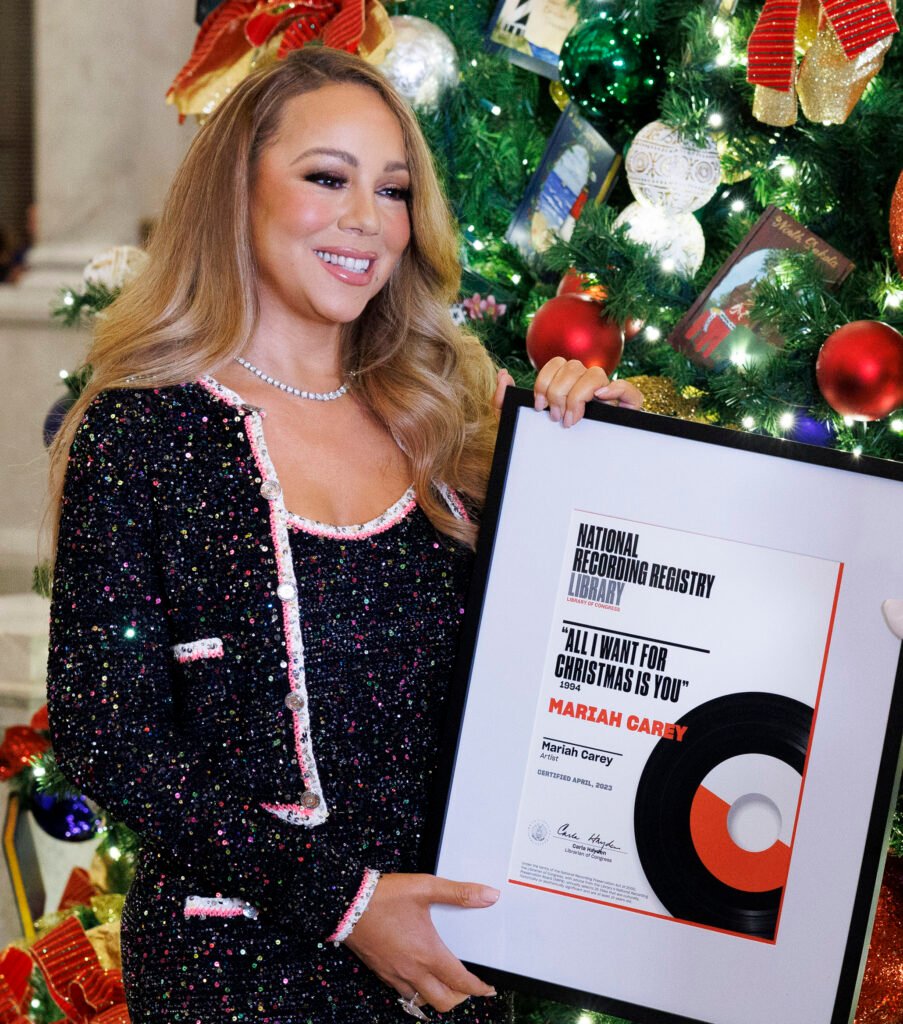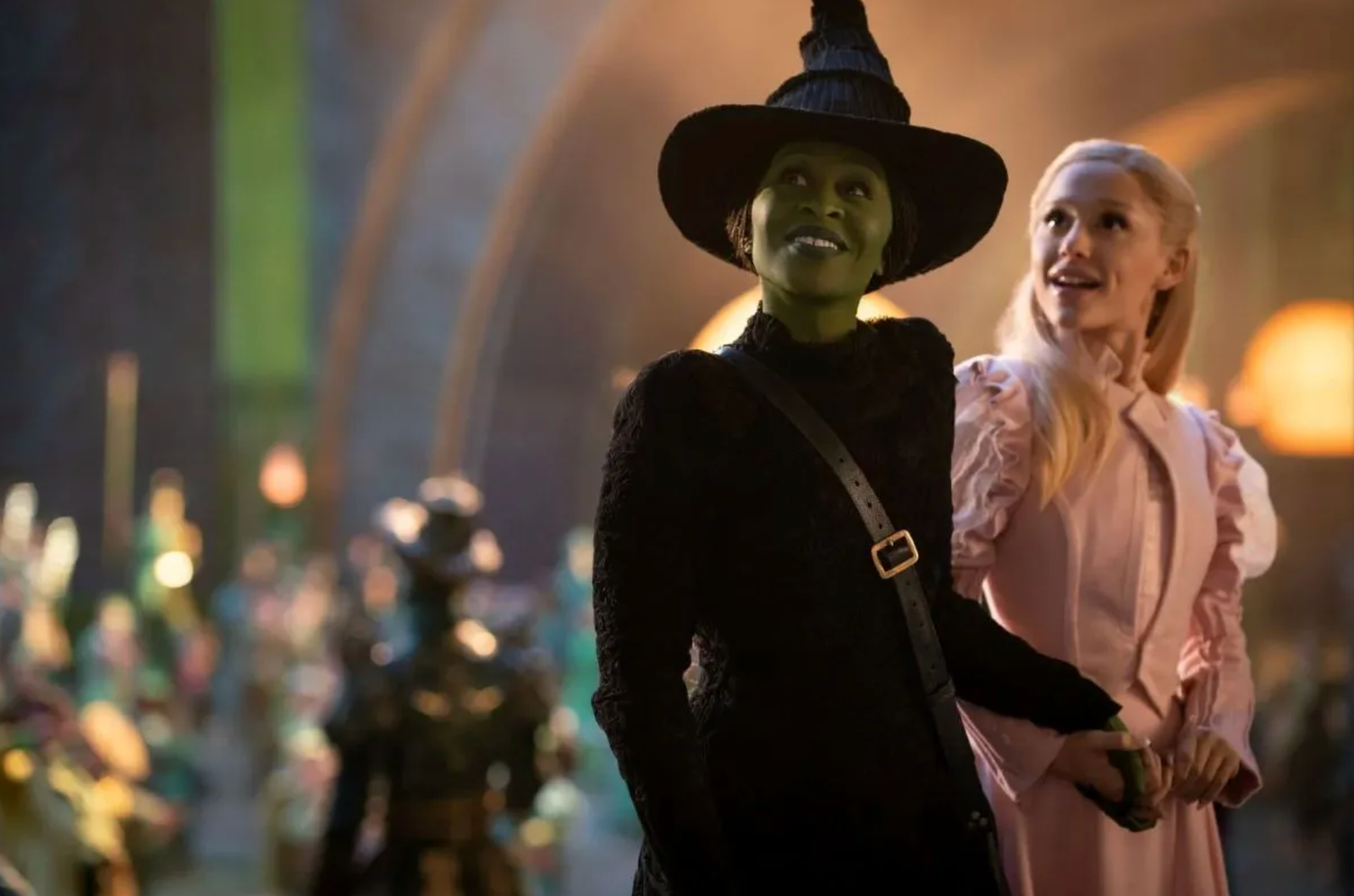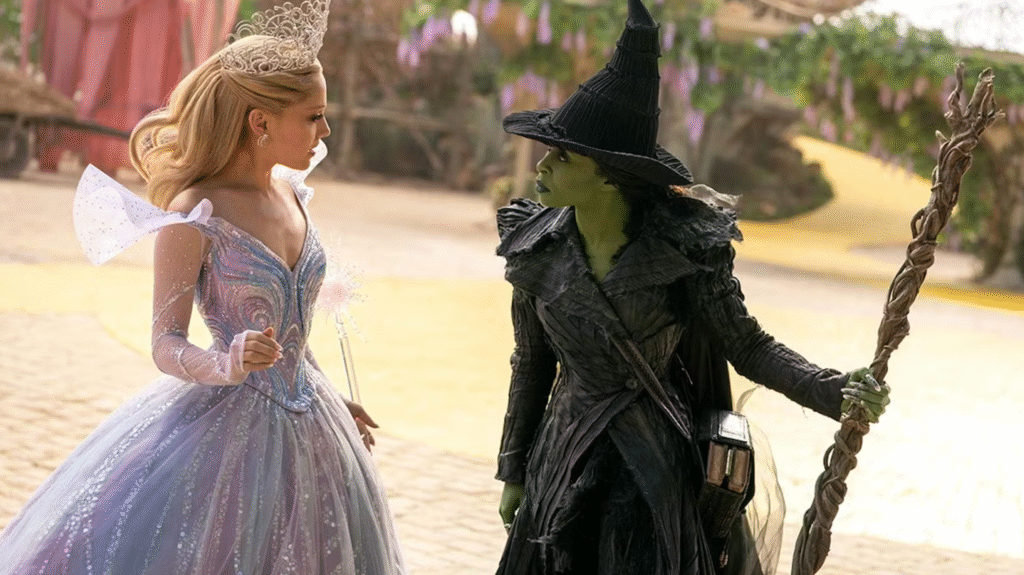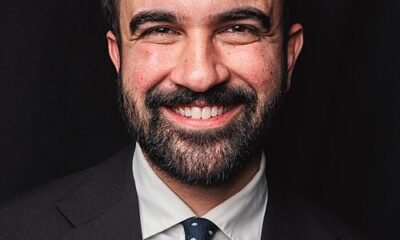Entertainment
Welcome to Plathville Return Date, Trailer Released: “The Family is Falling … on August 9, 2023 at 10:30 am The Hollywood Gossip

We’re about to be welcomed back to Plathville.
On August 8, TLC released the first trailer for Welcome to Plathville Season 5, revealing all the changes that are afoot for this formerly close-knit family.
Kim Plath and Barry Plath have separated, for example, while Ethan and Olivia may be headed down the same path.
The family is falling apart,” Ethan says at one point in the preview, which was unveiled on Tuesday by People Magazine. “And it’s a big old mess.”
Moriah Plath is a rebel, as she advertises in this photo from Welcome to Plathville Season 5. (TLC)
The promo opens with Moriah talking to her parents about her former best friend.
“She was using a made-up story to validate her big emotions,” she tells them, explaining to producers that Olivia claimed Kim had “used Ethan’s credit card and was stealing from Ethan.”
From there, we see Ethan and Olivia sharing an emotional hug as the latter says that she’s been ghosted by the Plath family members following a summer vacation she took to Europe.
Ethan also says that Moriah has blocked him.
Olivia and Ethan Plath share a hug in this Season 5 scene. (TLC)
One year ago, amid Olivia hurling shade at her mother-in-law, Moriah and her siblings released a statement that made it clear on whose side they are on.
On a July episode of Welcome to Plathville, the loved ones gathered for a memorial in honor of Joshua Plath, who died at 17 months old in 2008.
The details of what transpired at this emotional event were never made public — but even Olivia confessed she caused a scene.
Moriah, who has been very close to her sister-in-law for years, said on air that she reached a “breaking point” as a result of the drama, adding:
“I am so done. I am so over it. I’m just tired of fragile relationships.”
We’re throwing it back a little bit here to a photo of Ethan and Olivia from 2021. (Instagram)
Elsewhere, Micah is struggling to accept his parents’ separation while he’s on his own out in California.
He confesses in the video that he’s “still bitter about the whole divorce,” adding to his mom:
“I always thought you and dad were, like, perfect together,” he confides to his mom.
Micah later says he doesn’t want to “keep walking around eggshells around every single person” in the middle of all the drama.
(TLC)
In other parts of the trailer, Olivia reconnects with her sister and Kim tells mystery man that he’s giving her all the “warm fuzzies.”
As for Moriah, she is featured with a giant tattoo across her arm that reads “REBEL.”
In the end, though, the footage returns to Olivia and Ethan and teases how the marriage may be falling apart.
“I get back, she’s gone,” he says as he finds what appears to be a letter of some kind. “I’m just so tired of all the nonsense.”
Kim Plath looks pretty happy with life in this confessional from Welcome to Plathville. (TLC)
At the very end of the trailer, Ethan can be made out dramatically crying, Olivia!
Welcome to Plathville Season 5 premieres on Tuesday, September 5 at 10/9c on TLC.
Visit the official People Magazine website to check out the preview in full.
Welcome to Plathville Return Date, Trailer Released: “The Family is Falling … was originally published on The Hollywood Gossip.
Welcome to Plathville has set a premiere date! Find out when the show returns and what you can expect from new episodes now.
Welcome to Plathville Return Date, Trailer Released: “The Family is Falling … was originally published on The Hollywood Gossip.
The Hollywood Gossip Read More
Entertainment
Mariah Carey’s One Holiday Hit Pays her $3.3 Million a Year

Mariah Carey did not just land a Christmas hit; she locked in a seasonal paycheck for life. Every year, All I Want for Christmas Is You is estimated to pull in somewhere between 2.5 and 3.3 million dollars in royalties, from streaming, radio, licensing, and all those store playlists that flip her on the second the Halloween decorations come down. Over three decades, that adds up to tens of millions tied to a single song, turning one holiday anthem into a textbook example of how a perfectly timed pop track can become a retirement plan in glitter.

What keeps it so sticky is how audiences respond to it emotionally. Fans describe the song as an instant mood-lifter: the kind of track that makes people abandon their carts in Target, sing in the dairy aisle, or scream the chorus in the car like a full-blown music video moment.
People love the mix of old-school Motown-style production, sleigh bells, and Mariah’s big, joyful vocals—it feels nostalgic without sounding dated, and romantic without being corny to most listeners.
For a lot of millennials and Gen Z, hearing that opening piano riff is the unofficial signal that the holidays have “officially started.”
Of course, the obsession is loud enough that the backlash is, too—but even the complaints prove its impact. Some listeners say they are tired of hearing it everywhere, from October onward, but that is partly because it dominates every Christmas playlist, radio rotation, and TikTok trend. Whether people are passionately belting it out or dramatically rolling their eyes, the engagement keeps the streams flowing—and the royalties stacking. Love it or hate it, All I Want for Christmas Is You has become the soundtrack to December, and Mariah collects a festive multimillion-dollar “thank you” every single year.
Entertainment
How The Grinch Became The Richest Christmas Movie Ever

The Grinch didn’t just steal Christmas—he stole the box office. The 2018 animated film The Grinch turned holiday chaos into serious cash, grossing around $540 million worldwide on a modest $75 million budget, making it the highest‑grossing Christmas movie of all time. That is more than seven times its production cost, which is the kind of holiday return every studio dreams about.

Meanwhile, the 2000 live‑action How the Grinch Stole Christmas with Jim Carrey laid the groundwork for this green empire. That version pulled in roughly $345–347 million worldwide on a $123 million budget, turning a prickly Dr. Seuss villain into a perennial box‑office player and a meme‑ready holiday icon. The nostalgia around Carrey’s performance is a big part of why audiences were ready to show up again almost two decades later.
The Money Behind The Mayhem
The 2018 film did not just earn big—it earned smart.
It opened to more than $$67 million domestically in its first weekend and kept playing steadily through November and December, ultimately pulling in about $272 million in the U.S. and roughly $267 million internationally.
Then there is the profit. Trade estimates peg the film’s net profit in the neighborhood of nearly $185 million once theatrical revenue, home entertainment, and TV/streaming deals are baked in. That is before counting years of reruns, licensing, and holiday programming packages—every December, the Grinch gets another quiet deposit while everyone else is wrapping gifts.
Grinch vs. Everyone: Who’s Really On Top?
Here is how the Grinch stacks up against other Christmas heavyweights by worldwide box office:
| Film | Year | Worldwide Gross (approx.) | Notes |
|---|---|---|---|
| The Grinch (animated) | 2018 | $510–540 million | Highest‑grossing Christmas movie ever |
| Home Alone | 1990 | ~$476 million | Longtime champ, now second place |
| How the Grinch Stole Christmas (live‑action) | 2000 | ~$345–347 million | Built the modern Grinch brand |
| The Polar Express | 2004 | ~$315 million | Holiday staple, trails both Grinch movies |
Different sources list slightly different totals, but they all agree: the 2018 Grinch sits at the top of the Christmas money mountain.
Why The Grinch Keeps Printing Money
The secret sauce is that the Grinch is more than a movie—he is a business model. Every version of this character hits a different emotional lane: Jim Carrey’s 2000 Grinch is pure chaotic energy and quotable nostalgia, while the 2018 Grinch is softer, cuter, and perfectly engineered for modern families and global audiences. Together, they keep the character relevant across generations, which is exactly what studios want from an evergreen holiday IP.
On top of box office and home sales, the character feeds theme‑park attractions, holiday events, branded specials, apparel, toys, and seasonal marketing campaigns. The Grinch went from “I hate Christmas” to “I own Christmas,” quietly turning grouchiness into one of the most profitable holiday brands on the planet.
Entertainment
Ariana & Cynthia Say They’re in a ‘Non‑Demi Curious, Semi‑Binary’ Relationship… WTF Does That Even Mean?

If you’ve scrolled TikTok, X, or Theatre Kid Instagram in the last week, you’ve probably tripped over the phrase “non‑Demi curious, semi‑binary relationship” and immediately asked the only logical question: what on earth are they talking about? The term, now attached to Wicked co‑stars Ariana Grande and Cynthia Erivo, has gone from niche in‑joke to headline bait in record time. It sounds like a grad‑school thesis on gender studies, but it’s being used to describe two actors who may or may not just be very affectionate coworkers.

Here’s the spoiler: this isn’t a real, recognized relationship label. It’s a chaotic mash‑up of actual identity language and internet humor that landed on a fandom already obsessed with reading between the lines of every glance, grip, and giggle between these two.
What “non‑Demi curious, semi‑binary” is trying to do
At its core, the phrase is performance. It borrows real terms like “demi,” “curious,” and “binary,” then stacks them into something that sounds hyper‑specific while ultimately saying… almost nothing. It’s the situationship era dressed in queer‑coded academic cosplay. In plain English, the vibe is:
“We’re extremely close, we flirt with the idea of more, but we’re not calling it dating.”
For some fans, that ambiguity is the point. It mirrors the way a lot of modern relationships operate—emotionally intense, physically affectionate, publicly visible, but deliberately undefined. For everyone else, especially outside theatre and fandom spaces, it reads as theatre‑kid word salad.
The internet reacts: “Explain it like I’m five”
The audience reaction has been swift and brutal in the funniest way. Timelines are full of people essentially saying, “I looked this up and not even the internet knows what it means.” One user joked that they needed “a PowerPoint, a flowchart, and a glossary” just to keep up, while another quipped, “So y’all are in a relationship that’s 100% vibes and 0% clarity—just say that.”
On the lighter side, the phrase has already mutated into a meme template. People are using “non‑Demi curious, semi‑binary” to describe everything from their toxic situationships to that one friend they cuddled with all college but “never dated.” It’s becoming shorthand for any connection that is way too complicated to explain at brunch.

Could this be a PR stunt?
Is this whole thing organic chaos, or a carefully placed PR glitter bomb? The truth is likely somewhere in the messy middle. Wicked’s promo cycle was always going to be big, but a confusing, highly meme‑able “relationship label” is the kind of accidental lightning most marketing teams can only dream of. Whether the original wording came from a joke, a satire post, or a tongue‑in‑cheek comment, the effect is the same: everyone is talking about Ariana and Cynthia.
From a media strategy standpoint, it works. A bizarre label cuts through crowded feeds faster than another polished soundbite about “sisterhood” and “creative collaboration.” It also conveniently shifts the conversation away from heavier discourse around Ariana’s personal life by giving the internet a shiny new toy: a label to clown, remix, and recontextualize. Even if no one sat in a boardroom and said, “Let’s go with semi‑binary,” the attention it’s generating is pure PR gold.
Is this just normal theatre‑kid energy?
For anyone who grew up around performing arts programs, none of this feels that shocking. Theatre kids have a long tradition of giving their dynamics dramatic names: “stage spouse,” “art soulmate,” “rehearsal wife,” “creative twin.” Their friendships tend to be physically affectionate, emotionally intense, and described in language that sounds one step away from a fanfic title.
For the rest of the world—especially casual moviegoers who don’t speak fluent Fandom—this reads as completely unhinged. Half the internet is laughing, the other half is squinting, and both halves are still sharing the clips. That’s the sweet spot where modern celebrity lives: just confusing enough to go viral, just emotional enough to feel “real,” and just unserious enough to shrug off when the next headline hits.
So WTF does it mean?
Practically speaking, “non‑Demi curious, semi‑binary relationship” means three things:
- Ariana and Cynthia are extremely close and comfortable performing that closeness in public.
- The internet is hungry for labels, even if those labels are nonsense.
- Whether it started as a joke, a misquote, or a moment of theatre‑kid improv, it’s doing exactly what the industry runs on: keeping their names in your mouth and on your timeline.
Until someone sits down and gives a clear, sober definition (don’t hold your breath), the phrase will keep living where it was born—in memes, stan jokes, and group chats where everyone is asking the same question you are:
“Love that for them, I guess… but seriously, WTF does that even mean?”

 Entertainment4 days ago
Entertainment4 days agoWicked Sequel Disappoints Fans: Audience Verdict on For Good

 Entertainment3 weeks ago
Entertainment3 weeks agoAfter Party: Festival Winner for Best Romantic Short

 News3 weeks ago
News3 weeks agoCamp Wackapoo – Rise of Glog Takes Center Stage

 Entertainment3 weeks ago
Entertainment3 weeks agoFrancisco Ramos Takes Top Mockumentary Award at Houston Comedy Film Festival

 News2 weeks ago
News2 weeks agoYolanda Adams Questions Traditional Views on God’s Gender, Audience Reacts

 Politics3 weeks ago
Politics3 weeks agoTrump’s $2,000 Tariff Dividend Plan: Who Gets Paid?

 Politics4 weeks ago
Politics4 weeks agoMamdani’s Victory Triggers Nationwide Concern Over New York’s Future

 Film Production3 weeks ago
Film Production3 weeks agoWhy China’s 2-Minute Micro Dramas Are Poised To Take Over The U.S.



























